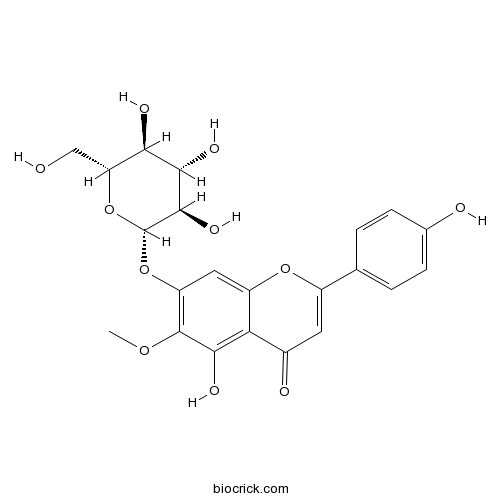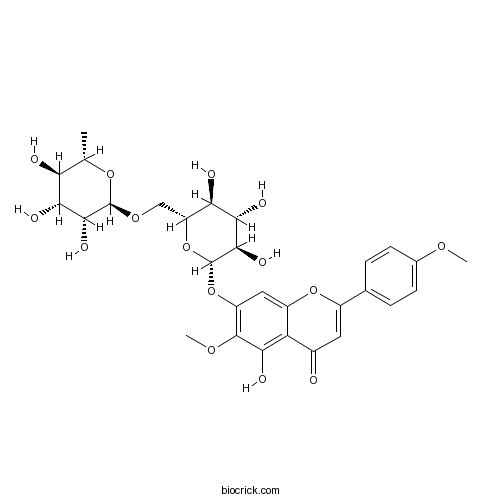Thesium chinense
Thesium chinense
1. The products in our compound library are selected from thousands of unique natural products; 2. It has the characteristics of diverse structure, diverse sources and wide coverage of activities; 3. Provide information on the activity of products from major journals, patents and research reports around the world, providing theoretical direction and research basis for further research and screening; 4. Free combination according to the type, source, target and disease of natural product; 5. The compound powder is placed in a covered tube and then discharged into a 10 x 10 cryostat; 6. Transport in ice pack or dry ice pack. Please store it at -20 °C as soon as possible after receiving the product, and use it as soon as possible after opening.
Natural products/compounds from Thesium chinense
- Cat.No. Product Name CAS Number COA
-
BCN2488
Homoplantaginin17680-84-1
Instructions

-
BCN1217
Pectolinarin28978-02-1
Instructions

Anti-oral common pathogenic bacterial active acetylenic acids from Thesium chinense Turcz.[Pubmed: 29435792]
Discovery of agents for oral infectious diseases is always encouraged in natural products chemistry. A bioassay-guided isolation led to the isolation of two new acetylenic acids (1, 2) along with seven known ones (3-9) from the ethanol extract of Thesium chinense Turcz, a commonly used oral anti-bacterial and anti-inflammatory herb. Their structures were elucidated on the basis of spectroscopic and chemical evidence. Exocarpic acid (3) demonstrated the most promising activity against three tested oral pathogenic bacterial strains, Porphyromonas gingivalis, Fusobacterium nucleatum, and Streptococcus mutans, with minimum inhibitory concentration values of 0.86, 3.43, and 13.70 μg/mL, respectively. Compounds 1, 2, 4, 5 and 7 also showed potential activities against periodontal bacteria (P. gingivalis, F. nucleatum).
Transcriptomic and Metabolomic Reprogramming from Roots to Haustoria in the Parasitic Plant, Thesium chinense.[Pubmed: 29281058]
Most plants show remarkable developmental plasticity in the generation of diverse types of new organs upon external stimuli, allowing them to adapt to their environment. Haustorial formation in parasitic plants is an example of such developmental reprogramming, but its molecular mechanism is largely unknown. In this study, we performed field-omics using transcriptomics and metabolomics to profile the molecular switch occurring in haustorial formation of the root parasitic plant, Thesium chinense, collected from its natural habitat. RNA-sequencing with de novo assembly revealed that the transcripts of very long chain fatty acid (VLCFA) biosynthesis genes, auxin biosynthesis/signaling-related genes and lateral root developmental genes are highly abundant in the haustoria. Gene co-expression network analysis identified a network module linking VLCFAs and the auxin-responsive lateral root development pathway. GC-TOF-MS analysis consistently revealed a unique metabolome profile with many types of fatty acids in the T. chinense root system, including the accumulation of a 25-carbon long chain saturated fatty acid in the haustoria. Our field-omics data provide evidence supporting the hypothesis that the molecular developmental machinery used for lateral root formation in non-parasitic plants has been co-opted into the developmental reprogramming of haustorial formation in the linage of parasitic plants.
[Study on winter dormancy of Thesium chinense and its phenological phase].[Pubmed: 27141667]
In order to explore reasonable artificial cultivation pattern of Thesium chinense, the biological characteristics and nutrients change in the process of winter dormancy of T. chinense was studied. The phenological period of T. chinense was observed by using fixed-point notation and the starch grains changes were determined dynamically by PAS-vanadium iron hematoxylin staixjing method. Soluble sugar and starch content were measured by anthrone-sulfuric acid method and amylase activity was determined by DN'S method. The results showed that the normal life cycle of T. chinense was two years. T. chinense was growing by seed in the first year, but growing by the root neck bud in the second year. During the process of dormancy, starch and soluble sugar could mutual transformation in different periods. T. chinense had sufficient carbohydrate to maintain growth and also a lot of small molecules to improve their ability to fight against adversity.
[Identification of chemical signals and haustorium induced of Thesium chinense].[Pubmed: 25911798]
To separate and identify chemical signals which induce Thesium chinense haustorium formation, the components of T. chinense roots secretion collected with XAD-4 resin were detected by GC-MS. The effect of DMBQ as exogenous signals to induce haustorium formation in T. chinense was studied. Fifty-three compounds of 9 types had been detected, including hydrocarbons, esters, organic acids, ketones, alcohols, nitrogen containing compounds, phenolic acids, aldehyde and quinine. It is worth noting that the 2, 5-di-tert-butyl-1,4-benzoquinone has the core structure of 1,4-benzoquinone, which may play an important role in the parasitic relationship of Prunella vulgaris and T. chinense: DMBQ worked effectively on inducing haustoria, but induction effects vary widely in different concentrations. DMBQ with the concentration of 1 μmol x L(-1) showed the best effect of the inducing ability with a ratio of 110.52 when treated to induce haustoria.
[Complex evaluation for influence of hosts on hemipatasite Thesium chinense].[Pubmed: 22803355]
To study the influence of host species on growth and development and active component content of Thesium chinense.
[Study on hemiparasitic mechanism of Thesium chinense].[Pubmed: 22741455]
To study the hemiparasitic mechanism of Thesium chinense.
[Study on biological characteristics of Thesium chinense].[Pubmed: 22737846]
To study the biological and growth characteristics of Thesium chinense.
[Study on seeds dormancy release and physiological change of Thesium chinense].[Pubmed: 22715717]
To study the seeds dormancy release and physiological change of Thesium chinense.
[Study on quality of medicinal material of Thesium chinense].[Pubmed: 22066436]
To study the quality of medicinal material of Thesium chinense.
[Species diversity and host of Thesium chinense community].[Pubmed: 21585023]
To study species diversity and the host of Thesium chinense community.


